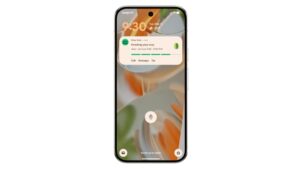Future Mac, iPad keyboards could be made of aluminum and alter glyphs based on a user’s needs
Future Mac and iPad keyboards could have keycaps that could display different functions depending on what task is being performed. Apple has been granted a patent dubbed “One-way Visibility Keycaps” for such a feature.
About the patent
The patent involves keycaps having illuminable glyphs that are selectively visible or invisible to an unaided human eye. In the patent Apple says that keyboards strongly influence the appearance and aesthetic of an electronic device, the usability and approachability of the device, the user’s perception of quality, the tactile and audible feedback provided to the user, and more.
Keyboard keys often include legends or glyphs used to identify the functions of each key. Also, to improve ease of use of a keyboard in low light conditions, many keyboards provide backlighting that illuminates the keys or glyphs. In many instances, the keycaps are designed to be thin and inexpensive, thereby leading them to be made of plastic and with painted-on or top-coated glyph material.
However, Apple says that painted or coated keycaps tend to have low durability due to their repeated contact with fingers, especially when the user has oily or dirty hands, thereby causing the glyphs to rub off or to become unreadable over time. Additionally, because the keycaps are made of plastic, they tend to have a lower quality feel and timbre as compared to other materials.
The keyboards described in Apple’s patent would be made of aluminum. The keys would illuminate when the Mac or iPad were powered up. However, unlike plastic keys, light would only be visible from the glyph on the key cap. The glyphs would appear to float due to individual light sources or displays that are positioned on or under each of the keycaps.
And the illuminated glyphs could change based on a user’s task. For instance, a controller of the keyboard could be used to control the displays to change between different keyboard layouts (e.g., QWERTY, QWERTZ, Colemak, etc.), different keyboard standards or languages (e.g., ANSI, ISO, JIS, Korean, Chinese, etc.), and different symbols or customizable glyphs (e.g., emoji, icons, system controls like power, volume, or brightness, application-specific function indicators, etc.).
In some embodiments, the key displays could be controlled to show animations, video, or other changing information over time in one key or a group of keys. Such keycaps could “enable interactivity with the keyboard in engaging and pleasing ways for users, while also having a subdued, refined, and uniform appearance while not being used,” Apple says.
Summary of the patent
Here’s Apple’s abstract of the patent: “Keyboards and other electronic input devices have a key or keys with glyphs that are invisible to an unaided human eye in a first condition, such as when an underlying display attached to the key is not emitting light. The glyphs are visible through the key or keys when the display emits light. A one-way visibility layer or structure obscures the visibility of the display when viewed from above, but when the display emits light, the light penetrates through the one-way visibility layer, such as by passing through an array of microperforations in the key, and is visible to an onlooker.”
I hope you’ll help support Apple World Today by becoming a patron. Patreon pricing ranges from $2 to $10 a month. Thanks in advance for your support.
The post Future Mac, iPad keyboards could be made of aluminum and alter glyphs based on a user’s needs appeared first on MacTech.com.




